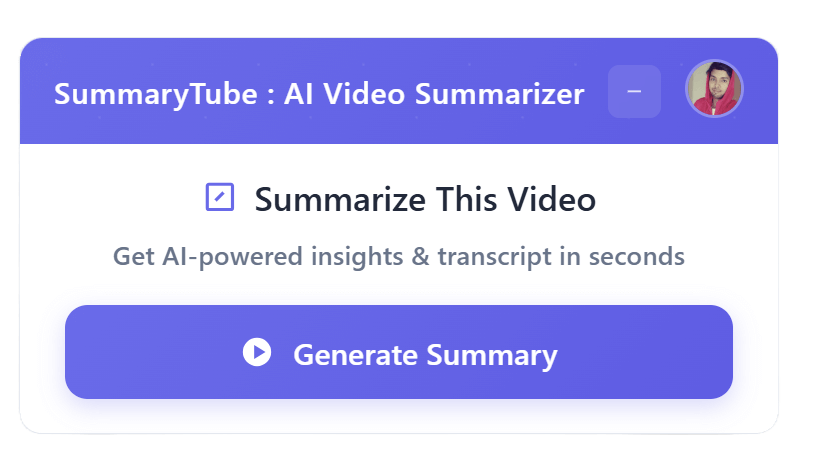What is Cosmos? ATOM Explained with Animations
By Whiteboard Crypto
Published Loading...
N/A views
N/A likes
AI Summary of "What is Cosmos? ATOM Explained with Animations"
Get instant insights and key takeaways from this YouTube video by Whiteboard Crypto.
Cosmos Vision & Interoperability
🌌 Cosmos aims to establish an open-source, fast, scalable, interoperable, and low-fee hub for blockchain use.
🌐 It envisions an "internet of blockchains," allowing decentralized communication between different chains, unlike the centralized internet.
✨ The core focus is on interoperability, enabling seamless interaction between disparate blockchains.
Cosmos Hub & Zone Architecture
🔗 Cosmos introduced a Hub and Zones model to address the lack of a central coordination point among numerous blockchains.
🌉 This model facilitates secure and efficient transfer of tokens across various chains, improving upon vulnerable blockchain bridges and limited atomic swaps.
🎯 The Hub connects independent "Zones" (blockchains), allowing them to communicate without complex transfer methods.
Inter-Blockchain Communication (IBC)
🔄 The Inter-Blockchain Communication (IBC) protocol enables seamless token transfers between all Zones connected to the Cosmos Hub.
↔️ IBC utilizes two-way pegging, similar to Bitcoin's sidechains, to create secure representations of coins on other chains.
📈 As of November 2021, 22 blockchains supported IBC, demonstrating significant cross-chain activity and positive growth within the Cosmos ecosystem.
Consensus Mechanism & Security
⚙️ Cosmos is built on the Tendermint protocol, a Proof-of-Stake (PoS) consensus mechanism designed for smooth interoperability.
🛡️ Tendermint is Byzantine Fault Tolerant (BFT), meaning the network remains secure even if up to 33% of validating power acts maliciously.
⚡ Its two-phase voting algorithm contributes to Cosmos's speed, security, and interoperability, making it faster than Proof-of-Work chains for cross-device use.
Cosmos vs. Polkadot
🤝 Both Cosmos and Polkadot share the common goal of blockchain interoperability.
🛠️ Cosmos utilizes a Software Development Kit (SDK), offering creators more control and sovereignty over their individual chains.
🔒 Polkadot provides built-in security features for chains built as parachains on its Layer 0 relay chain, requiring more buy-in to its governance structure.
⚖️ Cosmos emphasizes independence and connectivity, while Polkadot prioritizes shared security.
Key Points & Insights
🚨 Cosmos faces a potential issue of stake centralization, with the top 5 validators holding over 25% of voting power and the top 10 holding over 43%.
💰 The ATOM token is currently inflationary, with a staking reward rate of approximately 17%, making staking essential for holders.
🔄 Cosmos is actively addressing inflation concerns with the release of its Atom 2.0 whitepaper.
💡 The project represents an innovative approach to solving the interoperability problem, crucial for a cohesive future crypto ecosystem.
📸 Video summarized with SummaryTube.com on Jul 26, 2025, 11:15 UTC
Related Products
Find relevant products on Amazon related to this video
As an Amazon Associate, we earn from qualifying purchases
📜Transcript
Loading transcript...
📄Video Description
TranslateUpgrade
Join the waitlist for the Web3 "Portfolio Builder" Bootcamp: https://whiteboardcrypto.com/
Enroll in WhiteboardCrypto Club to claim your $20 ETH bonus, monthly NFT, and have immediate access to our community and private videos: https://whiteboardcrypto.com/whiteboardcrypto-club/
Full video URL: youtube.com/watch?v=jj299iVoKwc
Duration: 20:28
Recently Summarized Videos
Total Video Summary Page Visits :5
AI Summary of "What is Cosmos? ATOM Explained with Animations"
Get instant insights and key takeaways from this YouTube video by Whiteboard Crypto.
Cosmos Vision & Interoperability
🌌 Cosmos aims to establish an open-source, fast, scalable, interoperable, and low-fee hub for blockchain use.
🌐 It envisions an "internet of blockchains," allowing decentralized communication between different chains, unlike the centralized internet.
✨ The core focus is on interoperability, enabling seamless interaction between disparate blockchains.
Cosmos Hub & Zone Architecture
🔗 Cosmos introduced a Hub and Zones model to address the lack of a central coordination point among numerous blockchains.
🌉 This model facilitates secure and efficient transfer of tokens across various chains, improving upon vulnerable blockchain bridges and limited atomic swaps.
🎯 The Hub connects independent "Zones" (blockchains), allowing them to communicate without complex transfer methods.
Inter-Blockchain Communication (IBC)
🔄 The Inter-Blockchain Communication (IBC) protocol enables seamless token transfers between all Zones connected to the Cosmos Hub.
↔️ IBC utilizes two-way pegging, similar to Bitcoin's sidechains, to create secure representations of coins on other chains.
📈 As of November 2021, 22 blockchains supported IBC, demonstrating significant cross-chain activity and positive growth within the Cosmos ecosystem.
Consensus Mechanism & Security
⚙️ Cosmos is built on the Tendermint protocol, a Proof-of-Stake (PoS) consensus mechanism designed for smooth interoperability.
🛡️ Tendermint is Byzantine Fault Tolerant (BFT), meaning the network remains secure even if up to 33% of validating power acts maliciously.
⚡ Its two-phase voting algorithm contributes to Cosmos's speed, security, and interoperability, making it faster than Proof-of-Work chains for cross-device use.
Cosmos vs. Polkadot
🤝 Both Cosmos and Polkadot share the common goal of blockchain interoperability.
🛠️ Cosmos utilizes a Software Development Kit (SDK), offering creators more control and sovereignty over their individual chains.
🔒 Polkadot provides built-in security features for chains built as parachains on its Layer 0 relay chain, requiring more buy-in to its governance structure.
⚖️ Cosmos emphasizes independence and connectivity, while Polkadot prioritizes shared security.
Key Points & Insights
🚨 Cosmos faces a potential issue of stake centralization, with the top 5 validators holding over 25% of voting power and the top 10 holding over 43%.
💰 The ATOM token is currently inflationary, with a staking reward rate of approximately 17%, making staking essential for holders.
🔄 Cosmos is actively addressing inflation concerns with the release of its Atom 2.0 whitepaper.
💡 The project represents an innovative approach to solving the interoperability problem, crucial for a cohesive future crypto ecosystem.
📸 Video summarized with SummaryTube.com on Jul 26, 2025, 11:15 UTC
Related Products
Find relevant products on Amazon related to this video
As an Amazon Associate, we earn from qualifying purchases
Loading Similar Videos...
Recently Summarized Videos

Get the Chrome Extension
Summarize youtube video with AI directly from any YouTube video page. Save Time.
Install our free Chrome extension. Get expert level summaries with one click.